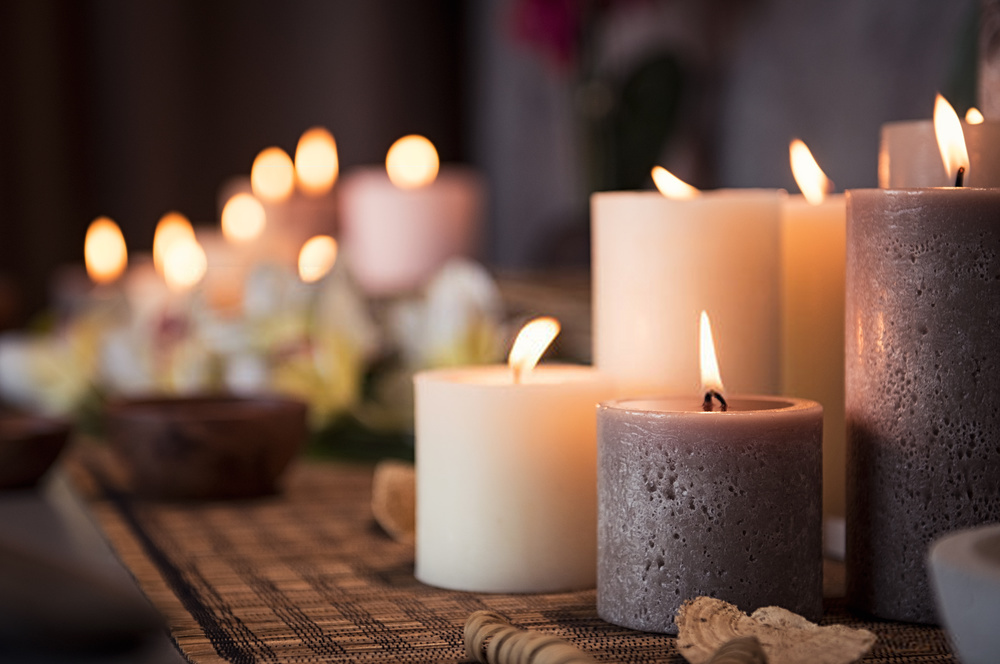Last Updated on 4 months ago by Nicky Johnson
Around 5,000 years ago, candles were first invented and were primarily used as a source of light – the same thing it is used for the most part in the modern world. But they have since evolved into something most people use today: scented candles, mostly for decorative and mind-calming purposes. Nowadays, you can find them in coffee shops, massage parlors, senior advisors’ offices, yoga studios, hotels, and every corner of your room. It’s also quite common to give them as gifts for different occasions.
Scents for these modern candles vary greatly depending on their uses and the mood you want to set using them. There are scents like citrus and citronella for mosquito and insect repellant purposes.

Lavender and eucalyptus are also popular scents meant to calm anyone smelling it. There are also more unconventional scents such as pizza, champagne, beer, library, popcorn, etc. So, if you feel like the usual scents need some twist, get yourself one of these candles.
But no one really thinks about the history of candles as they have become an everyday mundane object no one gives a second thought to. Have you thought about how candles came to be?
And have they always been scented decorative objects? It’s fine if you’ve never considered those questions. But now that you’ve got those questions in your head, it would be the perfect time to look for the answers.
The bad news is that there isn’t enough evidence in history books to pinpoint the precise date and location when candles were first made and used. However, some studies show how many civilizations have been creating and using something that resembles candles for thousands of years.
The Ancient Egyptians were one of the earliest producers and users of candles, and they made them by using animal fats to make wax; for the reeds, they used wicks. These innovations happened around 3,000 BC and then came the Romans. They utilized the pith of the papyrus to make wicks and then dipped it in melted tallow (also known as beeswax) during 500 BC. These two instances were the first documented use of wicked candles, which is also the modern version everyone uses today.
The Roles Of Asians And Jewish People In Reshaping The History Of Candles
Blog Contents
Several archeological studies in Asia show that the Early Chinese used rice paper rolled and wrapped with whale fat. The Chinese also used a mixture of ancient insects and seeds to make something that functions as candles.
To manufacture candle wax, the Japanese extracted wax from tree nuts. In India, the fruits of the cinnamon trees were boiled to create a wax that can be used to make candles, which gave off a powerful scent that was possibly one of the earliest records of scented candles being used.
Europe And Their Candles
During the time when the Roman Empire started falling apart during the Middle Ages, there was a shortage of olive oil. This oil was used to light oil lamps, and when the sources ran dry, tallow candles became the trend throughout Europe. Of course, grease, being a byproduct of animals, gave off a terrible odor. Because of the unpleasant scent, it was banned in many countries.
When tallow candles were banned, beeswax replaced it as the main ingredient to make candles. Unfortunately, beeswax was more expensive and not accessible to the average family. During this time, candles became a luxury, to the point of them becoming a status symbol of the rich and elite.
Candle-making became popular in most of England and France during the 13th century. Candlemakers of that time made a living by visiting each home and making candles for every homeowner from the animal fats they collected.
The Candles You Know Of Today
After learning how to extract and purify the waxy substance from petroleum, chemists brought paraffin wax into the candle-making industry in the 1850s. It became the new chemical used to produce candles since it was the most cost-effective substance ever utilized for candles.
The candles’ popularity dropped after the first light bulb was invented in 1879. But it has since made a major comeback in recent times as an ornamental piece, and perfect gift, especially after soybean and palm wax made candle making more affordable again.
Light One Up
Now that you know the fascinating history of candles, you should think about the thousands of years they have gone through to be the candles today. May this make you appreciate the candles you will light moving forward.







